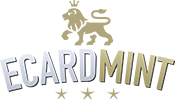An ecard, or electronic card, is basically a greetings card or postcard created using digital media instead of paper. Ecards are sent and received by email and can also be shared on social media. Where did ecards originate? Judith Donath of the MIT Media Lab is credited with creating the first online postcard service in …

What exactly is an ecard and what’s in it for you?
An ecard, or electronic card, is basically a greetings card or postcard created using digital media instead of paper. Ecards are sent and received by email and can also be shared on social media.
Where did ecards originate?
Judith Donath of the MIT Media Lab is credited with creating the first online postcard service in 1994, named The Electric Postcard. After a slow start (just 10-20 cards a day were sent in the first weeks) the concept took off and during the peak of the 1995-96 Christmas season more than 19,000 cards were sent a day.
Since then, the technology behind the ecard has evolved significantly and the market for ecards has proliferated. Initially most ecards were free, often sponsored by advertising. While free ecards are still prevalent, many of the better quality providers now charge a fee for premium ecards which are free from advertising and offer a range of additional features and benefits, as well as guaranteeing stringent policies on data protection and security. Pricing typically ranges from a one-off fee per card to an annual membership which enables users to send multiple cards throughout the duration of their membership.
What are the benefits of ecards?
The digital nature of ecards allows for great versatility and offers a raft of benefits. For example, ecards are immediate. There is no time delay between sending and receipt, and no risk of delivery delays. An ecard can be sent to multiple recipients at once, providing considerable savings in time and costs. Ecards are also considered more environmentally friendly than paper cards, not only in terms of their absence of paper but also because no physical delivery means a reduced carbon footprint.
As technology continues to advance, ecards are becoming increasingly creative and innovative, delivering a rich multimedia experience. Unsurprisingly, this is being noticed by the business community and marketing decision-makers are beginning to realise the power of ecards to engage audience attention and trigger a positive response.
A wide variety of different types of ecard is now available. ‘Static’ ecards are comparable to traditional printed cards in that they use a visual image and/or text with space for a personal message to be added. Animated and video cards use Flash or HTML5 technology to combine moving images with music and sound effects to create anything from a basic cartoon-style animation to the equivalent of a mini advert or short film. Animated cards can also include interactivity, involving the recipient in making selections and taking online actions. These are now further evolving to provide entertaining interactive online games, which are proving of strong interest to marketers for their ability to grab audience attention and their tendency to be widely shared and even go viral.
How are ecards delivered?
Once an ecard has been either selected from a range of online templates and customized for a specific purpose, or custom designed by an ecard provider, it is then delivered to the recipients by email. Here, there are two main options. Simple ecards can be displayed as an image within the body of an email message. However, for cards that employ richer use of media such as Flash animation and video, the cards are hosted on the ecard provider’s website and a link to the card is emailed to recipients.
Proving their worth
The digital nature of ecards enables senders to access valuable data about who has viewed their ecards. This is a vital benefit for business ecard users, enabling decision-makers to track responses to their ecard campaigns and hence evaluate their effectiveness.





